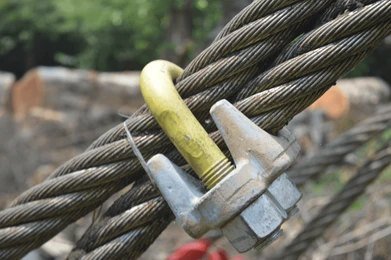Proper lubrication is essential for extending the life and safety of wire ropes. An effective lubrication system requires selecting the right lubricants, proper application methods, and diligent maintenance procedures. This post will review how to implement a responsible system for lubricating wire ropes like Viper Wrl that protects cables from wear while avoiding waste or environmental hazards. Let’s dive in.
Choosing the Right Lubricant
Start by selecting a wire rope lubricant designed for the application and environment. Key considerations:
- Temperature range – Choose viscosity rating fit for highest/lowest operation temps.
- Exposure – Lubricants must withstand water, UV, dirt, and chemicals if exposed.
- Movement – Frequent flexing/vibration requires lubricants with anti-fling properties.
- Speed – High-speed cables need lubricants with adhesive ability to combat centrifugal forces.
- Purpose – Certain applications like food handling have FDA-rated lubes.
Consult manufacturers to match lubricant performance properties to your wire rope’s operating conditions.
Applying the Proper Lubricant Amount
Resist the urge to over-apply. Too much lube leads to waste, fling-off, and accumulation of abrasive particles. Follow manufacturer-recommended amounts based on rope diameter. Measure carefully and keep the application even across the length. Typically, a thin, uniform coating is ideal. The lubricant amount should just fill the valleys between individual strands.
Selecting the Best Application Method
Multiple methods effectively apply lubricant across the rope surface:
- Drip systems: Discharge lube from reservoirs via nozzles at a slow, controlled rate.
- Brushes: Use brass wire brushes in a holder to spread lubricant manually.
- Sprays: Spray lube evenly via hand pumps or automated spray setups.
- Baths: Immerse rope in the lube bath tank, then remove excess lube.
Consider ease of use, safety, frequency, and cost when selecting the optimal application system.
Establishing Proper Lubrication Intervals
Lubrication schedules balance maximizing wire rope life vs. waste and disruption:
- Infrequent lubrication causes cable wear and shortens service life.
- Too frequent lubrication wastes lube requires downtime and attracts contaminants.
Follow manufacturer recommendations for lubrication intervals. Increase frequency for extreme conditions; decrease if environmental exposure is low.
Extending Lubrication Intervals
Intervals can be extended through the use of supplemental products:
- Penetrating sprays – Loosens dirt/debris so lube reaches inner strands.
- Cleaning systems – Remove old lube/grime before reapplying fresh lubricant.
- Protective coatings – Barrier resists water/particles from penetrating between re-lubes.
Combining robust lubrication with products that clean and protect wire rope leads to longer service intervals.
Proper Post-Application Process
Once lubricant is applied:
- Wipe off any excess lube to prevent dripping and waste.
- Run the wire rope under load to evenly distribute lube within strands.
- Hang or position horizontally overnight, allowing it to absorb fully into the core.
The finishing steps are distributing and setting the lubricant for optimal cable protection.
Responsible for Lube Storage and Handling
Store wire rope lubricant properly in sealed containers to avoid contamination.
Handle carefully to prevent spillage or leakage into soil. Provide secondary containment around larger volumes. Dispose of used lubricant responsibly as hazardous waste. Never discharge into sewage or water systems.
Documentation and Training
Document all lubrication procedures and schedules clearly. Train all personnel involved to follow proper protocols. Keep records of lubricant amounts applied, intervals, inspections, and re-lubrication dates. Documentation ensures consistency. These tips will maximize wire rope service life while ensuring responsible lubrication practices. Let me know if you need any other advice on implementing an effective wire rope lubrication program.
